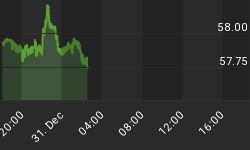The Fed was able to end its massive $3.7 trillion series of Quantitative Easing campaigns without the stock market and economy falling apart. The end of QE 3, in October of 2014, did cause temporary turmoil in the major averages; but all in all, it did not lead to a protracted market decline, nor did it immediately send the economy into a recession.
The consensus view then became that the Fed's strategy of unprecedented interest rate and monetary manipulations was a huge success, and it would be able to slowly raise the Fed Funds rate with impunity.
Perhaps it was this assurance that gave Ben Bernanke's successor, Janet Yellen, the temerity to begin liftoff in December of 2015. However, when the Fed commenced its first rate hike, it led to the worst beginning of a year in stock market history, as the Dow Jones industrial average lost more than 10% of its value between January 1st and Feb. 11th. Therefore, while the markets seem to have become somewhat comfortable with the end of QE (at least for now), they have also reached the consensus that a protracted tightening cycle is a completely untenable position for the Fed to hold.
The U.S. Central Bank's "success" with QE, coupled with the pervasive condition of economic weakness throughout the world, persuaded the Bank of Japan (BOJ) and the European Central Bank (ECB) to not only follow in the Fed's QE footsteps, but also to force sovereign debt yields into negative territory. In fact, thanks to the BOJ's ¥80 trillion ($660 billion) and the ECB's €960 billion ($1.06 trillion) per annum bond-buying schemes, there is now nearly $12 trillion worth of government debt that trades in sub-zero territory. What's more, is the ECB's total QE program now exceeds the entire GDP of Spain and Italy; while the BOJ's intervention has brought its ownership to over half of all ETFs and over 33% of all its sovereign bonds.
But as arduous as the path to interest rate normalization will be to the Fed, it will be far more chaotic for the BOJ and ECB to even hint at rate hikes. Indeed, it will be virtually impossible for these two central banks to terminate their counterfeiting sprees without causing complete chaos in global markets and economies.
This is because the Fed stopped its QE programs well before inflation hit 2%, and when the Ten-year Note yield was well above zero percent. Year over Year CPI in the U.S. was 1.6% in October 2014 and was headed down towards negative territory by the start of 2015. Also, the 10-year Treasury was 2.3%. Hence, inflation was below the Fed's target and going lower, while Treasury yields were far from being negative. These two conditions allowed the Fed to stop buying bonds without causing the market to completely revolt.
In sharp contrast, Messer's Draghi and Kuroda have vowed they would not end QE until the inflation target of 2% is achieved in a sustainable manner. But these gentlemen have been trying, unsuccessfully, to bring inflation to that level for years; what gives them the confidence they can stick the landing on a 2% inflation target? They cannot. Inflation will eventually rise to 2% and keep on moving higher.
Also, 10-year yields in Germany and Japan are negative 20bps and 28bps respectively. This amounts to a tremendous difference in economic conditions that were evident in the U.S. during the end of QE 3 and what we find in Europe and Japan today. By ending QE when disinflation was still prevalent and yields were in positive territory, the Fed was able to cease its intervention in markets without causing its bond bubble to burst.
However, by waiting until inflation is well entrenched in the mindset of investors and after pushing sovereign bond yields well into negative territory; the ECB and BOJ have unwittingly backed their sovereign debt markets into death traps. Therefore, even suggesting that it is time to gradually pull back from bond purchases will cause a colossal stampede out of Japanese Government Bonds and European Sovereign Debt.
Traders that have habitually been front-running the central banks' bids will try to dump their holdings of negative yielding debt as bond prices plunge in response to a 2% -- and rising -- inflation rate. Throw in debt to GDP ratios that have absolutely soared since the Great Recession of 2008 and the result will be complete chaos in bond markets.
Even worse, whatever anemic growth rates that have been achieved in Euroland and Japan have come off the back of asset bubbles and persistently falling borrowing costs and debt service payments. Therefore, as bonds begin to reverse decades of falling yields, look for the denominators in the debt to GDP ratios of these countries to plummet. Thus, exacerbating the move higher in rates, which will only expedite the plunge in asset prices and in turn further depress GDP growth.
This is the inevitable result of such massive and unprecedented distortions in market prices. Sadly, the price discovery mechanism has been trampled on for so long that a safe return to free markets has now become absolutely impossible.
















